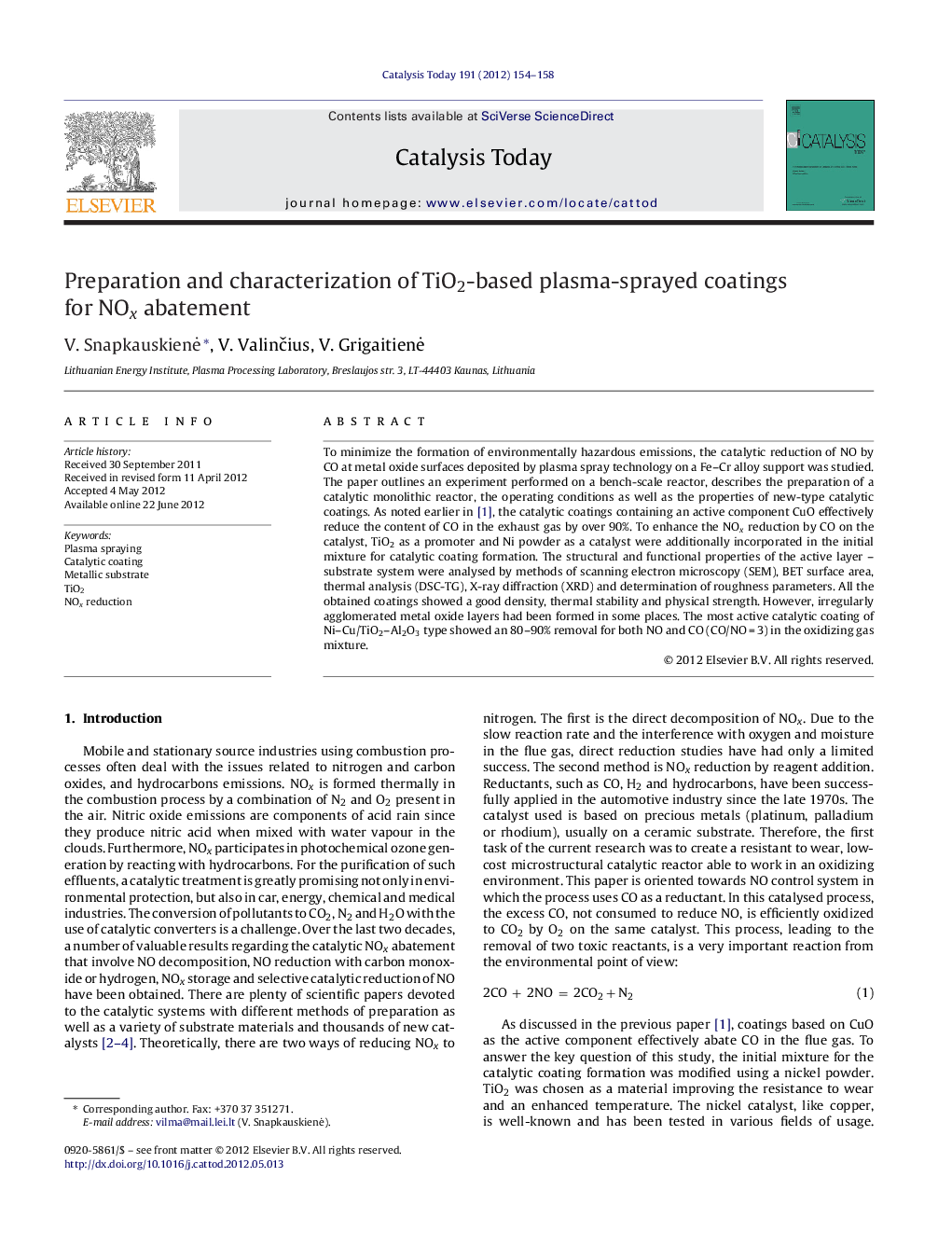| کد مقاله | کد نشریه | سال انتشار | مقاله انگلیسی | نسخه تمام متن |
|---|---|---|---|---|
| 55295 | 47046 | 2012 | 5 صفحه PDF | دانلود رایگان |

To minimize the formation of environmentally hazardous emissions, the catalytic reduction of NO by CO at metal oxide surfaces deposited by plasma spray technology on a Fe–Cr alloy support was studied. The paper outlines an experiment performed on a bench-scale reactor, describes the preparation of a catalytic monolithic reactor, the operating conditions as well as the properties of new-type catalytic coatings. As noted earlier in [1], the catalytic coatings containing an active component CuO effectively reduce the content of CO in the exhaust gas by over 90%. To enhance the NOx reduction by CO on the catalyst, TiO2 as a promoter and Ni powder as a catalyst were additionally incorporated in the initial mixture for catalytic coating formation. The structural and functional properties of the active layer – substrate system were analysed by methods of scanning electron microscopy (SEM), BET surface area, thermal analysis (DSC-TG), X-ray diffraction (XRD) and determination of roughness parameters. All the obtained coatings showed a good density, thermal stability and physical strength. However, irregularly agglomerated metal oxide layers had been formed in some places. The most active catalytic coating of Ni–Cu/TiO2–Al2O3 type showed an 80–90% removal for both NO and CO (CO/NO = 3) in the oxidizing gas mixture.
Figure optionsDownload high-quality image (298 K)Download as PowerPoint slideHighlights
► TiO2 as promoter and Ni and/or Cu powder as catalyst for NO reduction in CO presence.
► Catalytic coatings prepared by plasma spraying technology.
► The general problem of washcoat adhesion to metal support was partly solved by changing chromium oxide to titania.
► The maximum conversion of 86% was achieved using Cu–Ni/TiO2–Al2O3 sprayed coating.
Journal: Catalysis Today - Volume 191, Issue 1, 15 September 2012, Pages 154–158